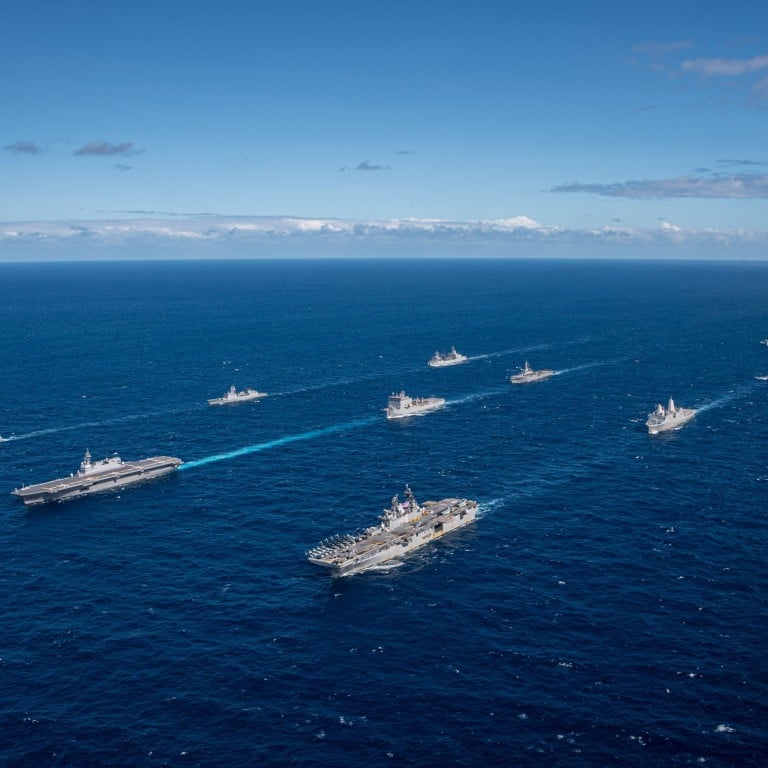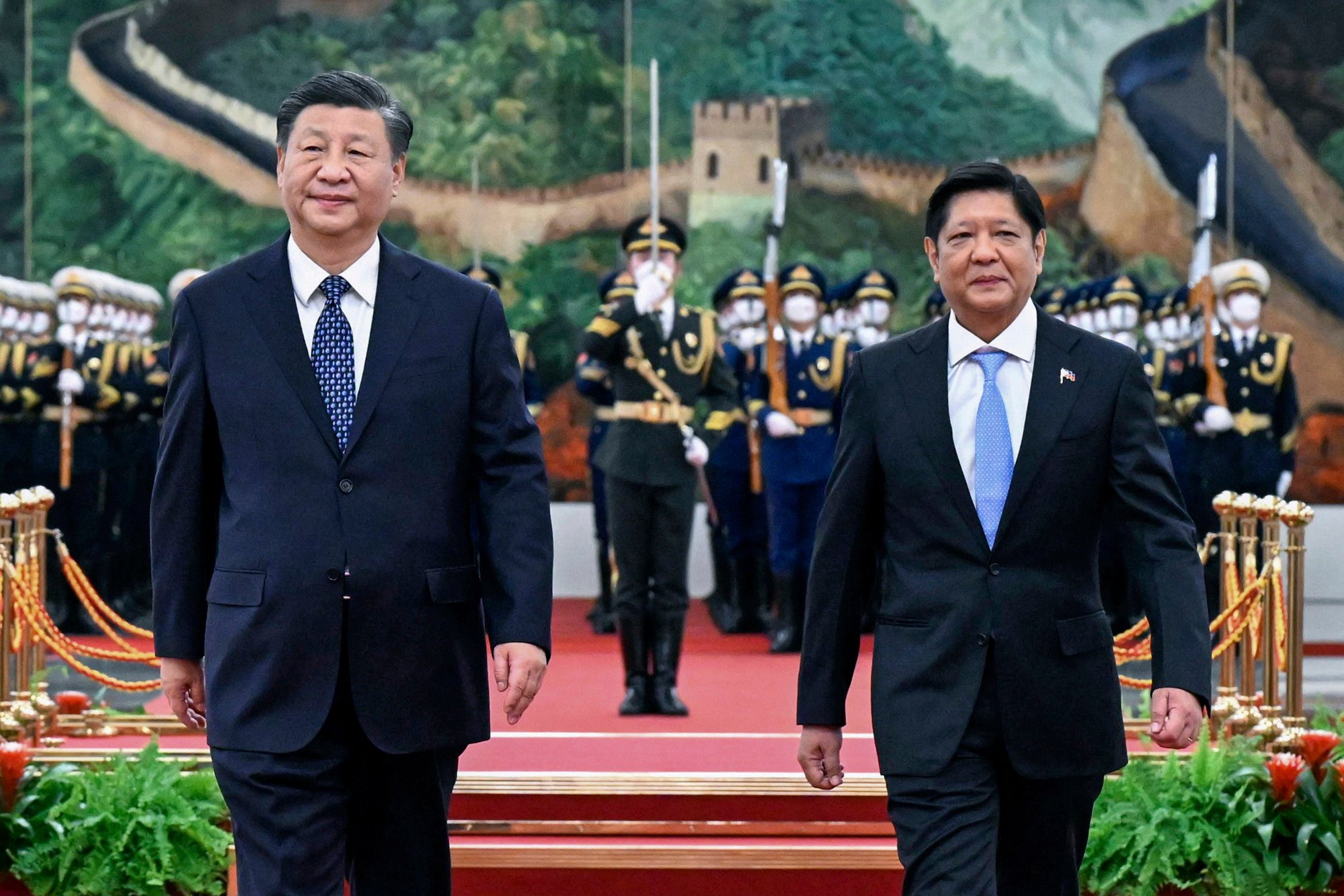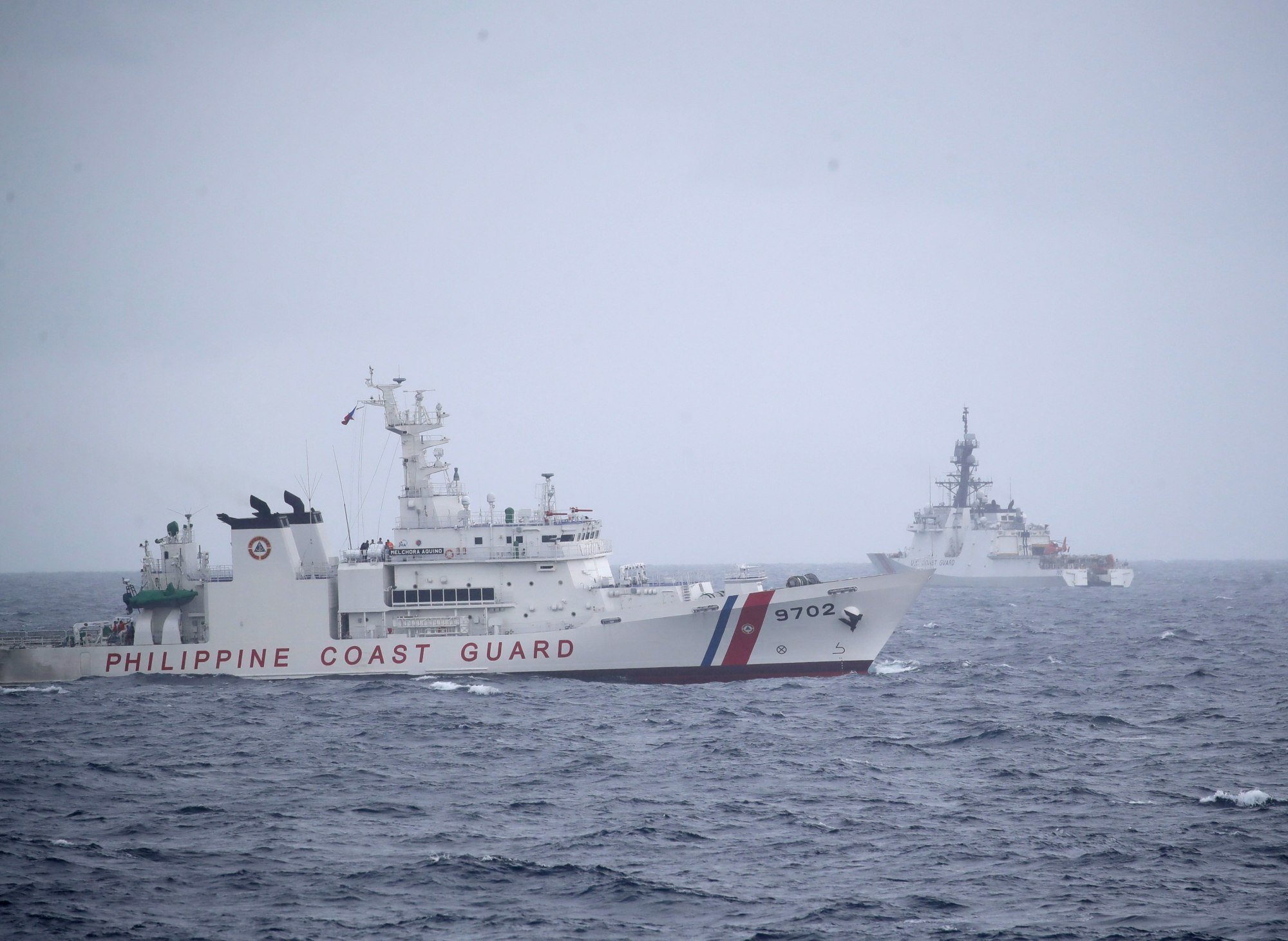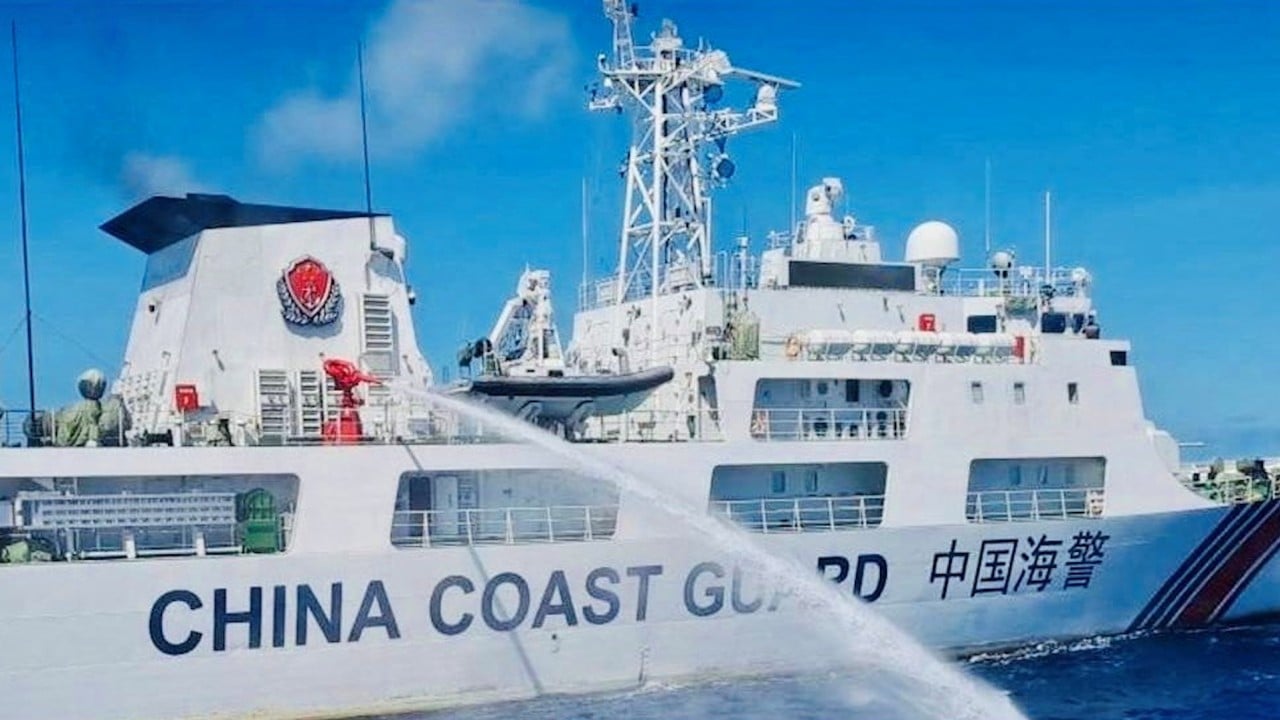
South China Sea: as Philippines hosts US-Japan-Australia drills, will external players’ presence escalate tensions?
- Analysts say China’s ‘relentless’ and disruptive activities in the disputed waterway have resulted in Manila’s ‘I’ve had enough’ attitude
- But hosting ‘external players’ such as the US, Japan and Australia for joint military drills only raises the ‘spectre of dangerous run-ins’
The exercises are set to include three aircraft and helicopter carriers sailing together in a show of force, alongside joint drills, with the commanders to later meet their Filipino counterparts in Manila.
Jeffrey Ordaniel, an associate professor of international security studies at Tokyo International University in Japan, said escalating tensions would persist in the disputed waterway as long as “the biggest, most powerful claimant is not content with the status quo”.
He noted that the recent incident in the Second Thomas Shoal was just one instance in a series of efforts by China “to change the status quo by coercion”.
The Philippines and several Western nations, including the US, had criticised the Chinese use of water cannons in the incident as “dangerous”.
How a submerged reef is emerging as a South China Sea flashpoint
Ordaniel said the Sierra Madre’s presence at the reef, alongside the regular rotation of troops and resupply missions, had been “the status quo” since 1999, and Southeast Asian countries as well as China had committed – through the 2002 Declaration on the Conduct of Parties in the South China Sea – to exercise “self-restraint in the conduct of activities that would complicate or escalate disputes”.
“In short, they promised not to disturb the status quo. China, by preventing Manila’s rotation and resupply mission, disturbed that status quo and escalated tension, violating the spirit of the 2002 [declaration],” said Ordaniel, who is also the non-resident director for maritime security at the Pacific Forum, a Honolulu-based foreign policy research institute.
Ordaniel said Manila understood it could not resist the pressure alone, and added that this week’s joint US-Japan-Australia drills were aimed at showing support for the Philippines exercising its rights under international law.

The previous Philippine administration also played down Beijing’s coercion, and explored ways to seek joint development in the contested waters, Ordaniel said. “[However], China did not reciprocate … and did not show willingness to compromise.”
Lucio Blanco Pitlo III, a research fellow at the Manila-based Asia-Pacific Pathways to Progress Foundation think tank, said the growing presence of allied air and water assets in the strategic waterway via joint patrols or drills would increase “the spectre of dangerous run-ins”.
China did not reciprocate … and did not show willingness to compromise
Beijing’s “heavy-handedness” is likely to compel Manila to double down on working with allies and partners, Pitlo said, noting that doing so would also strengthen Manila’s position in any negotiations on the maritime row.
While the Philippines will not take part in this week’s drills, it is open to becoming a participant in the future, according to Filipino officials.
“China is likely to increase pressure on the Philippines in the South China Sea to dampen Manila’s enthusiasm to revitalise alliance ties with Washington, especially as it bears on a potential Taiwan Strait contingency,” Pitlo said.

Beijing views the island as a renegade province to be brought under mainland control, by force if necessary. Many countries, including the US, do not officially acknowledge Taiwan as an independent state but oppose the use of force to change the status quo.
Joshua Bernard Espeña, a resident fellow at the International Development and Security Cooperation think tank in Manila, said tensions in the South China Sea were likely to become more heated as all sides were refusing to waver from their approach.
China’s “relentless” and disruptive activities in the sea had resulted in the Philippines’ “I’ve had enough” attitude, he said, while Beijing is likely to view Manila’s support of external players such as the US, Australia, and Japan as “destabilising”.
China warns of external influence ahead of South China Sea code of conduct talks
Espeña said that Manila’s continued attempts to deliver supplies to the Second Thomas Shoal would result in uneasiness among Southeast Asian states.


